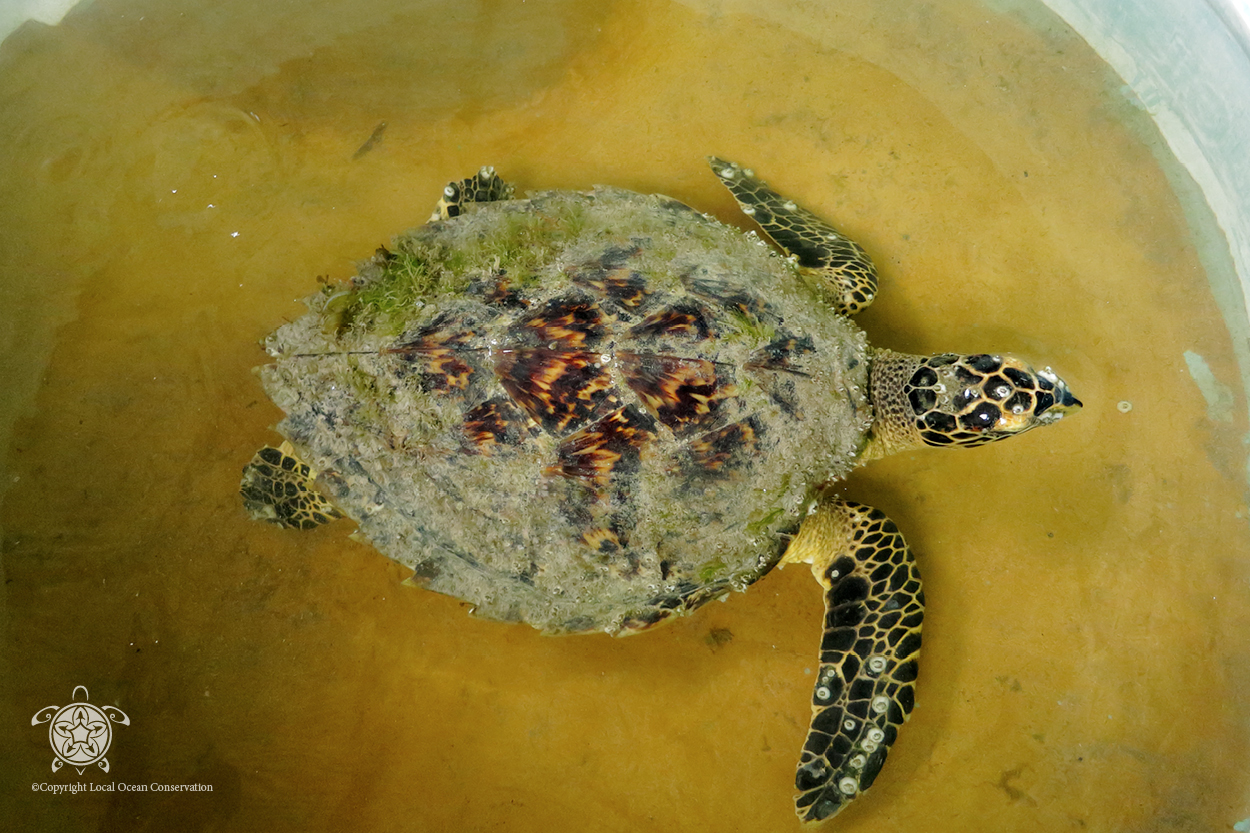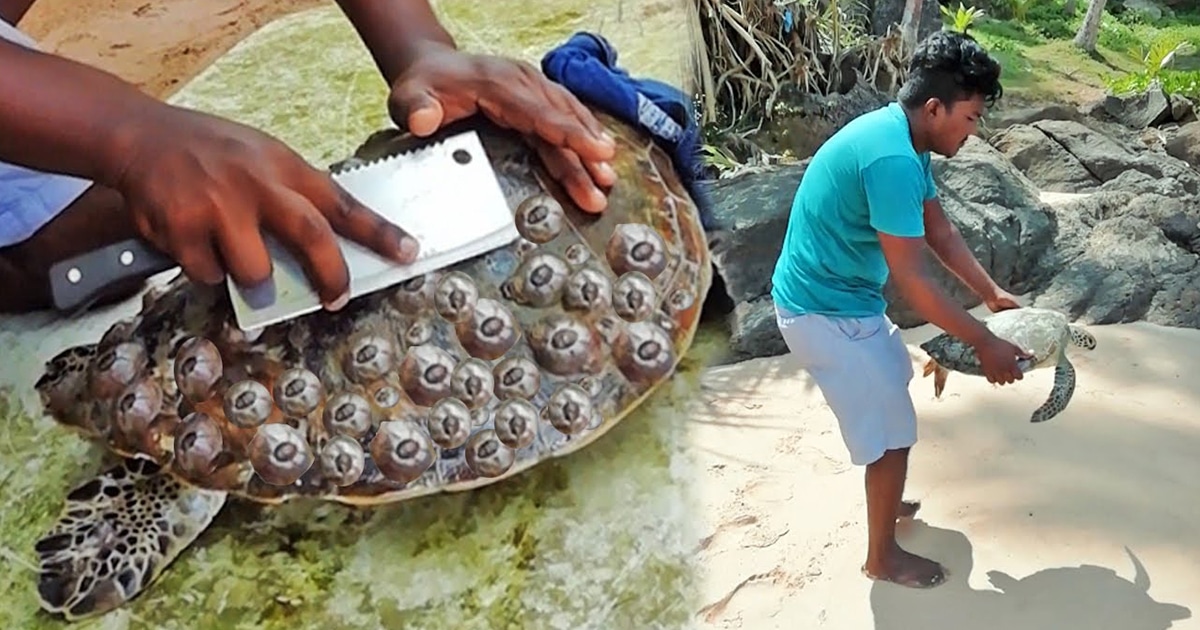Removing barnacles from turtles can be harmful as it can cause stress and injury to the turtle. However, if done carefully by professionals, it can benefit the turtle’s health and well-being.
Barnacles can hinder the turtle’s movement, feeding, and overall health if left untreated. Properly removing barnacles from turtles can help improve their quality of life and prevent potential infections or other health issues. It is important to consider the best approach and seek guidance from wildlife experts to ensure the safety and welfare of the turtles during the removal process.
The Impact Of Barnacles On Turtles
When it comes to the impact of barnacles on turtles, it is important to understand the potential consequences of barnacle infestation on these marine creatures. Barnacles, which are small crustaceans that attach themselves to the shells of turtles, can have various effects on the health and well-being of turtles. From impacting their ability to swim and forage for food to causing physical discomfort and potential health complications, the presence of barnacles on turtles is a matter of concern for conservationists and researchers.
Barnacle Infestation On Turtles
Barnacle infestation on turtles occurs when these crustaceans attach themselves to the shell, skin, or flippers of the turtles. The barnacles form a hard, calcareous covering that can become quite extensive, leading to a heavy burden on the turtle’s body. This not only affects the turtle’s mobility but can also cause discomfort and physical stress.
Effects On Turtle Health
The presence of barnacles on turtles can have detrimental effects on their health. The added weight from the barnacles can hinder the turtle’s ability to swim and dive effectively, impacting their foraging and hunting activities. Additionally, the barnacles can create abrasions and lesions on the turtle’s skin, potentially leading to infections and other health issues. Furthermore, the presence of barnacles can disrupt the turtle’s hydrodynamics, making it more difficult for them to navigate through the water.

Credit: localocean.co
Debating The Removal Of Barnacles
Barnacles can often be found clinging to the shells of sea turtles, causing concern among conservationists and researchers. Debating the removal of these barnacles raises important questions about the impact on the turtles’ health and well-being.
Arguments Against Removal
- Removing barnacles can cause stress to the turtles.
- It may disrupt the natural ecosystem and symbiotic relationships.
- Repeated removal could lead to skin damage and infection.
Arguments For Removal
- Heavy barnacle infestations can hinder the turtle’s mobility.
- Reducing the weight of barnacles can improve the turtle’s swimming ability.
- Preventing potential health issues associated with barnacle overgrowth.
Challenges In Barnacle Removal
Removing barnacles from turtles can be challenging due to the delicate nature of the turtle’s skin and the risk of causing harm. It requires careful handling and specialized tools to ensure the barnacles are removed without causing further injury to the turtle.
Expertise and caution are crucial in this process to avoid any negative impact on the turtle’s health and well-being.
Removing barnacles from turtles is a complex process that requires careful handling to ensure the safety and well-being of the animal. However, it is not always easy to remove barnacles from turtles, and there are several challenges that must be overcome to ensure a successful outcome. In this section, we will discuss some of the challenges associated with barnacle removal, including the risk of injury to turtles and the effectiveness of removal methods.Risk Of Injury To Turtles
The process of removing barnacles from turtles can be risky and stressful for the animal. Turtles can suffer from physical injuries, stress, and infection if the removal process is not done correctly. For example, if the barnacles are removed using sharp tools, the turtle’s skin can be cut, leading to physical harm and potential infection. Therefore, it is essential to use gentle and non-invasive methods when removing barnacles from turtles.Effectiveness Of Removal Methods
There are different methods of removing barnacles from turtles, including manual removal, scraping, and using chemicals. However, not all methods are effective, and some can even harm the turtle. For example, using harsh chemicals can be detrimental to the turtle’s health and can cause skin irritation and other health issues. Therefore, it is essential to use safe and effective methods that do not harm the animal. In conclusion, removing barnacles from turtles is a complex process that requires careful handling and consideration of the animal’s well-being. It is crucial to use safe and effective methods that do not harm the turtle and to take steps to reduce the risk of injury and stress during the removal process. By doing so, we can help to ensure the health and survival of these incredible creatures for generations to come.Credit: www.quora.com
Ethical Considerations
Ethical considerations play a crucial role in the decision-making process when it comes to the removal of barnacles from turtles. While it may seem beneficial to rid turtles of these parasites, there are ethical implications that need to be carefully considered.
Interference With Natural Processes
Removing barnacles from turtles can interfere with their natural processes. Barnacles, although considered parasites, are a part of the turtle’s ecosystem and may provide some form of natural benefit. Intervening with this natural symbiotic relationship may disrupt the delicate balance of the turtle’s ecosystem.
Benefit Vs. Harm To Turtles
When considering the ethical implications of removing barnacles from turtles, one must weigh the potential benefits against the potential harm to the turtles. While removing barnacles may provide immediate relief for the turtles, it may also lead to stress and potential damage to their delicate skin. Additionally, the long-term effects of interfering with the natural process of barnacle attachment need to be carefully assessed.
Research And Expert Opinions
Studies On Barnacle Removal
Barnacles are a common sight on the shells of sea turtles, leading to the question of whether removing them is harmful. Studies have shown that heavy barnacle infestations can hinder a turtle’s ability to swim, feed, and thermoregulate, which can have detrimental effects on their overall health. However, the act of removing barnacles from turtles is a topic of ongoing research to better understand its potential impact.
Insights From Marine Biologists
Marine biologists emphasize the importance of considering the specific circumstances of each turtle before deciding whether to remove barnacles. They stress that the removal process must be carried out with great care to avoid causing harm to the turtle’s delicate skin. While the general consensus leans towards the potential benefits of barnacle removal, ongoing research and expert opinions continue to shape our understanding of this practice.
Alternative Approaches
Discover alternative approaches to addressing barnacles on turtles without harming them. Exploring gentler methods can protect marine life effectively.
As removing barnacles from turtles can cause significant harm, it is essential to find alternative approaches that do not put the turtle’s health at risk. Here are two potential alternatives to consider:Promoting Natural Barnacle Shedding
One way to deal with barnacles on turtles is to let nature take its course. Barnacles naturally fall off turtles as they shed their skin. By ensuring that the turtle is healthy and has access to clean water, you can promote natural shedding and reduce the number of barnacles on the turtle over time.Supporting Turtle Rehabilitation Centers
Another way to help turtles with barnacle problems is to support turtle rehabilitation centers. These centers provide a safe and controlled environment for turtles to recover from injuries and illnesses. By supporting these centers, you can ensure that turtles receive the necessary care and attention to heal from their injuries, including the removal of barnacles if needed. In conclusion, removing barnacles from turtles can cause significant harm and should be avoided. Instead, promoting natural barnacle shedding and supporting turtle rehabilitation centers are two effective and safe alternatives to consider.Educational And Awareness Efforts
Barnacles can hinder a turtle’s ability to swim and feed properly.
Raising awareness helps people understand the negative effects of barnacles on turtles.
Educating the public empowers individuals to take action in protecting turtles.
Understanding the importance of conservation efforts is crucial for turtle survival.
Conclusion And Future Considerations
Balancing Conservation And Intervention
When considering the removal of barnacles from turtles, it is crucial to strike a balance between conservation efforts and intervention. While removing barnacles may seem beneficial for the turtle’s health, it is essential to evaluate the potential impact on the natural ecosystem and the turtle’s natural behavior. Conservationists and researchers must weigh the short-term benefits of barnacle removal against the long-term implications for the overall well-being of the turtle population.
Areas For Further Research
As the debate on the removal of barnacles from turtles continues, there are several areas that warrant further research. This includes studying the physiological effects of barnacle infestations on turtles, exploring alternative methods for barnacle removal that minimize stress on the turtles, and investigating the long-term ecological consequences of intervention. Additionally, research on the natural behaviors and adaptations of turtles in response to barnacle infestations can provide valuable insights into their ability to coexist with these organisms.

Credit: mymodernmet.com
Conclusion
Barnacles on turtles can harm their health, so removing them is beneficial. However, it’s crucial to do so carefully to avoid causing further harm. By understanding the importance of this process, we can help protect these magnificent creatures and ensure their well-being in the long run.





Leave a Reply